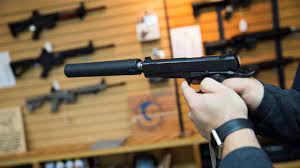Legal Challenges to the National Firearms Act: Case Studies and Precedents
Given that its enactment in 1934, the National Firearms Act (NFA) has had a significant affect on the regulating firearms in the usa. Initially designed to tackle concerns surrounding gang-associated physical violence along with the proliferation of particular firearms, the NFA has evolved through the years to encompass a wider array of weapons and components.
A single significant impact of the NFA is its influence on the firearms business and market place. The strict regulations imposed from the Act have limited the option of particular firearms and accessories, driving a vehicle up costs and building a niche market market for collectors and lovers. In addition, the NFA has spurred innovation in firearm design, as producers seek to build compliant choices to regulated goods.
In addition, the national firearms act has played an important role in shaping open public insurance policy and discourse encompassing firearms regulation. Supporters of pistol handle usually point out the NFA like a design for successful firearm control, citing its registration specifications and background checks as crucial measures for boosting community basic safety. Conversely, opponents of firearm management debate that the NFA infringes upon 2nd Amendment rights and imposes undue problems on regulation-abiding residents.
Because the scenery of firearms regulation continues to develop, the National Firearms Act stays a foundation of federal law regulating the possession, exchange, and producing of particular firearms and accessories. By comprehending the impact and progression in the NFA, people can engage in informed discussions about firearm policy while advocating for steps that equilibrium open public basic safety with individual privileges.


